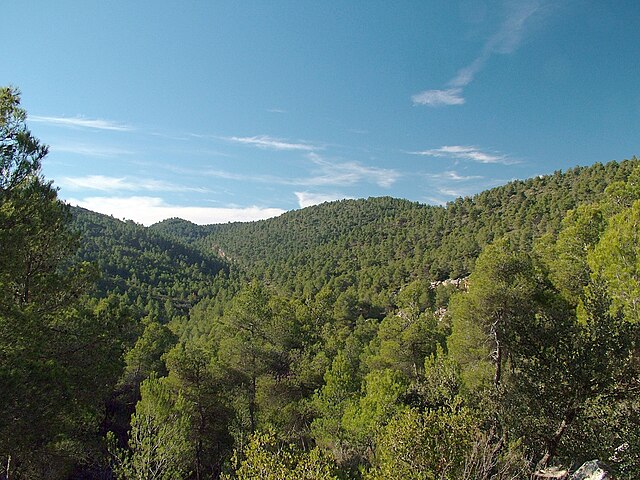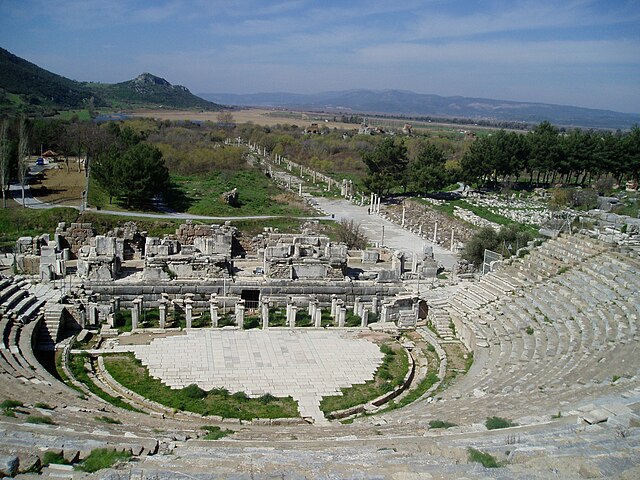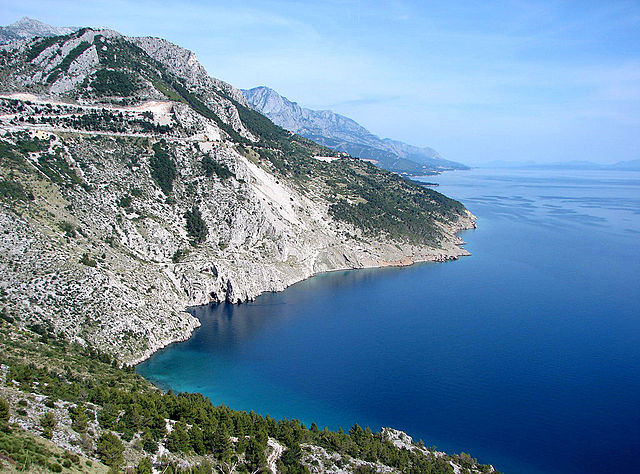Mediterranean forests, woodlands, and scrub
Mediterranean forests, woodlands and scrub is a biome defined by the World Wide Fund for Nature. The biome is generally characterized by dry summers and rainy winters, although in some areas rainfall may be uniform. Summers are typically hot in low-lying inland locations but can be cool near colder seas. Winters are typically mild to cool in low-lying locations but can be cold in inland and higher locations. All these ecoregions are highly distinctive, collectively harboring 10% of the Earth's plant species.
Jabal Moussa Biosphere Reserve in Lebanon
A Mediterranean forest, in the Region of Murcia (Spain).
Close up of Ephesos ancient Greek amphitheatre with a maquis shrubland
Springtime in Chilean Matorral a few kilometers north of Santiago along the Pan-American Highway
A Mediterranean climate, also called a dry summer climate, described by Köppen as Cs, is a temperate climate type that occurs in the lower mid-latitudes. Such climates typically have dry summers and wet winters, with summer conditions ranging from warm to hot and winter conditions typically being mild to cool. These weather conditions are typically experienced in the majority of Mediterranean-climate regions and countries, but remain highly dependent on proximity to the ocean, altitude and geographical location.
Aegean Sea of Ölüdeniz, Turkey
The Ionian Sea, view from the island Lefkada, Greece
Makarska Riviera in Dalmatia, Croatia
The coastal Mediterranean region of Costa Brava, Catalonia, Spain








